We had an email this week from a farmer who saw a lot of painted lady butterflies (not the larvae) and he was wondering what to do about them. Butterflies have siphoning mouth parts, much like a straw. When you see them flying around in flowering crops, they are gathering nectar. This adult activity is harmless to crops and may actually provide some pollination benefit.
Adults also lay eggs. Larvae that hatch from these eggs will do some crop feeding – next year. Even then, butterfly larvae are not major pests and rarely cause enough damage to warrant a spray.
Here are the three most common butterflies in canola, with photos of adults and larvae.
Cabbage/Cabbage White/Cabbageworm. Two cabbageworm species are commonly found in canola fields: the imported cabbageworm and the western cabbageworm. Imported cabbageworm larvae are green with a velvety texture, and have a faint yellow stripe down their backs. Western cabbageworm larvae have brilliant blue and yellow stripes down the back. Larvae feed on leaves but do not cause economic losses. Adult stages of both species are white butterflies with a few dark markings and a slight yellowy tinge.
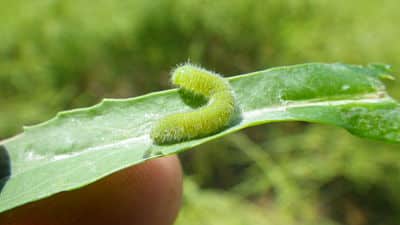
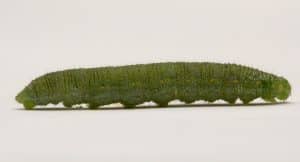
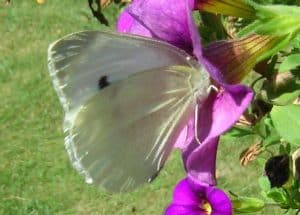
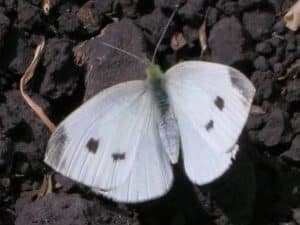
Checkered white. These are in the cabbageworm family and present about an equal-sized risk — which is next to zero. Checkered white butterflies have a few black square-shaped spots on the wings. While larvae may eat a few leaves, they are not considered an economic risk. READ MORE
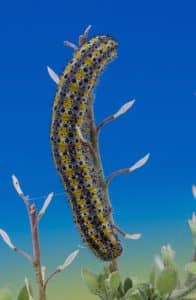
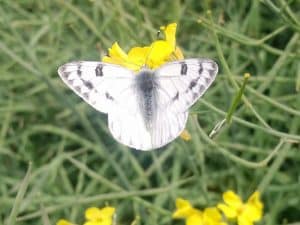
Painted lady. Also called “thistle caterpillars”, painted lady larvae generally prefer thistles. But if thistles are not available or stripped bare, their next favourite seems to be soybeans. They will also feed on sunflowers and canola if they have to. Action thresholds for soybeans is 25% defoliation. Manitoba Agriculture has posted a suggested threshold of 25-30% defoliation prior to bloom; 20% after bloom or pod set. For more on soybean thresholds, read the PPMN blog. READ MORE for images of adults and more detailed descriptions.
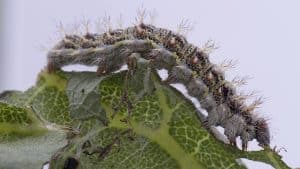
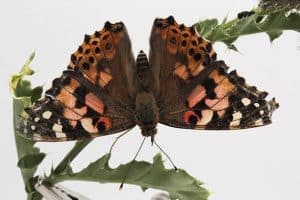
Further reading: